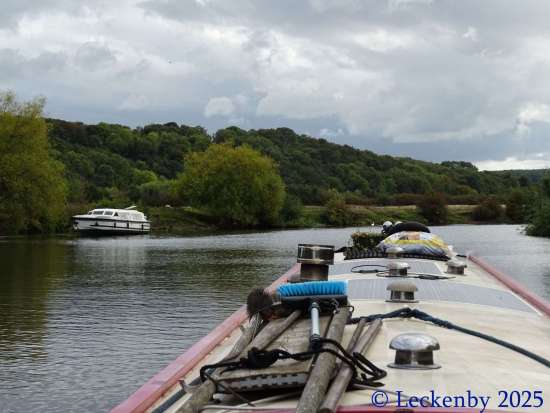Stoke Lock
Mick turned Oleanna’s engine on this morning, put her in gear, that same noise, vibration and grinding could still be heard, it was worse in reverse. He called Alastair in Goole, a chap who’s done work on Oleanna over the last few winters and sorted out our water pump a few years ago. He couldn’t hear at first, so Mick sent him a sound file of the engine running. Twenty minutes or so later he called back. From what Alastair could hear it sounded like the gear box or the drive plate was going. Best to get it seen sooner rather than later and the best thing to do would be to call RCR.
RCR were called, our location passed on and symptoms described along with the possible diagnosis. They’d call back when an engineer had been allocated to the job. When they called back the ETA for Kane, the engineer, was 2 hours.

Tilly came and went, I got on with some bits for panto. I needed a material to make a giant rose from. Someone had suggested plastizote, a foam that you can get in different thicknesses and colours. I’d looked it up a few weeks ago and having enough to make the rose would cost in the region of £120! Quite a lot on something that is just a nice thing to have, a bit of a tradition for Chippy. I looked round and spotted my yoga mat. If I can make a giant mug from yoga mats then I can make a giant rose from it too. I spent a while finding the cheapest thickest bright pink mats I could. Worked out I’d need just a bit more than one. Oh well at least they’d come in £100 cheaper than the plastizote. I next hunted round for some card to make smaller roses, hopefully I’ve selected two different shades.
Around 2pm Kane arrived. The engine board was lifted, engine put in gear. He checked all the simple things first, the engine mounts, they were okay. Then he started to listen closely, in gear, forwards and reverse, reverse was worse. His diagnosis, gear box or drive plate. He asked how old the engine was, drive plates tend to last about ten years and Oleanna’s engine may be getting close to that.

The office was called. They didn’t have the right drive plate in stock, it could be one of two. To get to the drive plate he’d need to take the gear box off, the engine would need supporting then whilst he removed the drive plate to see which one it is. This is likely to take around three hours, it would then leave us without a working engine to charge the batteries. It was decided to leave the engine as was, order in both possible drive plates and when they arrive an engineer would return to do the job, 3 hours to remove the drive plate, 3 hours to put a new one on and put the engine back together. Whilst we wait for it to arrive we will still be able to charge our batteries.

Kane checked that we were okay for supplies, our nearest shops maybe a couple of miles away, but we were fine having topped up in Nottingham a couple of days ago. The only thing we might need is water. Fortunately we are pretty close to two water points, unfortunately it would require us to move the boat by using the engine. Kane thought we should be okay to reach the tap in the lock cut, hopefully we’ll make it back too!
There is still a slight chance that the problem might be with the gear box instead.

I headed off for a walk, along the access road to the lock towards Stoke Bardolph. It’s 15 minutes to reach the main road from our mooring and a bus stop. I then checked Google maps to see if there was a different way back to Oleanna, there might be, paths not shown on OS maps, but obvious on Google. I found the nearest post box and walked back along the side of drainage ditches on good paths, then kept to the side of a field on a well worn path that brought me back to the river through the wood by the lock.

Mick went on line to request an overstay, our mooring here is officially 2 days. CRT have a new system where you fill out a form on line, Mick clicked the map for our location as best he could and pretty quickly our overstay request was granted. An email popping into the inbox to confirm it. Here’s hoping we don’t still need to be here in two weeks time, Kane hoped someone would be back with us before the end of the week. Fingers and paws crossed.

6pm arrived. Where was Tilly? She likes it here and must have got busy! I called and called. I walked up and down, thankfully no-one around to hear me this time. I was just about to give up when I could hear her bell approaching. ‘What did I say about coming when called?!!!‘ Yes but that doesn’t count when I’ve found some friends!
Chicken and leek mac cheese tonight.
0 locks, 0 miles, 1 grinding engine, 2 engineers, 1 one the phone, 1 in person, 2 drive plates on order, 1 poorly boat, 1 distracted cat, 1 Production Manager catching up, 2 yoga mats, 2 reams card, 2 bus stops, 1 post box, 46 minutes brisk walking, 1 Mrs Tilly stamp … you can’t give it two stamps of approval!




































































































